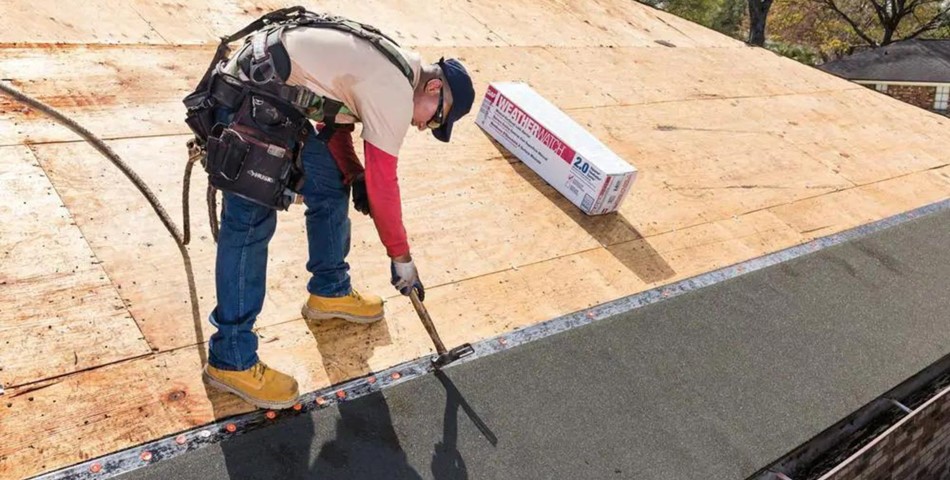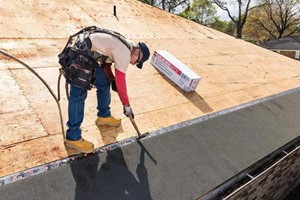From the ground, a roof looks like a simple set of inclined planes meant to shed water. However, roofs are actually complex systems of shingles, plywood, different types of flashing, membranes, vents, sealant, and more. Underneath it all sits one of the most important components of the system: the roofing underlayment.
Roofing underlayment serves many purposes. It protects the plywood decking from the elements, helping shed moisture and prevent leaks while also maintaining a barrier between the roofing material and decking. This guide will explain how to choose and what to look for in the best roof underlayments.
Types of Roof Underlayments
There are essentially three types of roof underlayments: felt, rubberized, and synthetic. Each has its pros and cons, and there are certain situations in which one may excel over the others.
Felt
Felt roofing underlayment, also known as felt paper, is the old-school version of roofing underlayment. These thick, heavy rolls of felt include combinations of polyester and natural plant fibers soaked in bitumen (commonly known as asphalt). They’re generally inexpensive compared with other materials, and they come in lighter-weight (15 pound) or heavy-duty (30 pound) varieties.
Though felt is more affordable, it’s important to understand its drawbacks. First, it’s very heavy and difficult to lift onto a roof, so it comes in much shorter rolls than other materials. Also, felt paper isn’t very tear-resistant, so shingles need to be installed immediately to avoid damage from the elements.
Rubberized
Rubberized roofing underlayment is a different animal. These products are essentially peel-and-stick rubber membranes that roofing installers can apply directly to the roofing deck. One side of the membrane is smooth while the other has a sticky substance known as butyl.
Rubberized roofing membrane is highly adhesive and creates a waterproof barrier over the roofing deck. It’s the best material for preventing leaks from ice dams and other weather events, and many installers use rubberized underlayment in conjunction with synthetic or felt products.
Synthetic
Synthetic underlayment is quickly growing in popularity. These lightweight sheets made of woven or spun synthetic fibers (polyethylene or polypropylene) provide a durable, weather-resistant barrier that is easy to apply and often includes shingle or nailing patterns printed on their faces.
Because synthetic roofing underlayments are so lightweight, manufacturers can offer more square footage per roll. They’re more expensive, but the faster coverage that synthetic underlayments offer because of their size can be a big boost in production. Also, because the fibers that make up synthetic underlayments are so durable, they don’t need to be covered nearly as soon as felt does.











